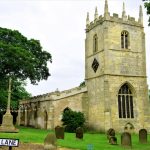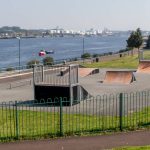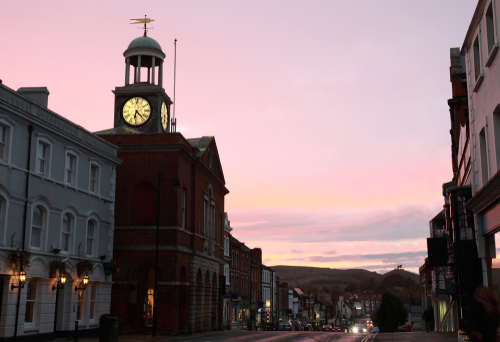
Bridport in Brief
Bridport is a small market town in Dorset, south-west England. It’s located just 1.5 miles inland from the English Channel coast at West Bay. The town also lies near the confluence of the River Brit and its tributary the River Asker. Bridport has its origins in Saxon times and was established as a ‘burh’ (fortified town) by Alfred the Great. The town also has a long history as a centre of excellence for rope making. At the 2011 national census, the population of Bridport was recorded as 13,568.
A Fleeting History
Early Times
The area around Bridport was first inhabited in the Iron Age. Eggardon Hillfort, some 6 miles east of Bridport dates from around 300 BC. Another Iron Age settlement, the lesser-known Hardown Hillfort, is also located just 4 miles west of the town. The origins of Bridport itself are in Britain’s Anglo-Saxon era. It became one of the most important settlements in Dorset when King Alfred the Great made it a ‘burh’, along with the other Dorset towns of Dorchester, Shaftesbury and Wareham.
The early 10th century Saxon chronicle, the ‘Burghal Hidage’, records the existence of a burh somewhere in the locality of Bridport, called ‘Brydian’. The name generally means ‘place on the river’, ‘bride’ being the Saxon word for river. However, it’s also thought possible that the name may have transferred from an earlier settlement in the nearby Bride Valley, which was abandoned in favour of the harbour location at Bridport.
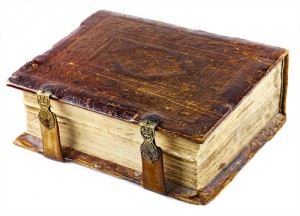
(Photo Credit: Katrien 1/Shutterstock.com)
The Normans
In the Domesday Book of 1086, the town’s name was recorded as ‘Brideport’, the word ‘port’ being an Old English word for a market town. Sometime later date, in untypical fashion, it’s thought that it was the town’s name that was adopted for the naming of the local river. The renamed River Brit had previously been known as the River Wooth.
By the early 13th century, Bridport already had a reputation as a centre for the manufacture of rope. In 1211, King John decreed ropes and cords for his navy had to be made in accordance with ‘Bridport weight’. Since a conflict with France was looming, this was part of an effort to get the King’s ships war-ready. Such was the town’s renown for rope-making, a common euphemism of the time; ”stabbed by a Bridport dagger”, meant to be hanged.
In 1253, the town was awarded its first charter by Henry III, granting the town’s citizens certain rights. Also in the 13th century, a priory was founded in the town by Carmelite monks (or white friars). In 1295, Bridport was granted the right to send two representatives to Parliament, a sure sign of the town’s growing importance.
The Plague, Civil War and Fairs
During the 14th and 15th centuries, the Bridport population, like many other Dorset coastal towns, suffered significant fatalities due to frequent outbreaks of the ‘black death’. The 14th-century chronicler Geoffrey (the) Baker recorded that the plague had “almost stripped the seaports of Dorset of their inhabitants”.
In 1554, Elizabeth I confirmed the right for Bridport to hold a twice-weekly market and three annual fairs. The two weekly markets still exist, held on Wednesdays and Saturdays. One of the annual fairs also survives as the town’s annual carnival.
The English Civil War (1642–1651) saw Bridport’s population mostly give their support to the royalists. In 1651, Charles II took brief refuge in the town after defeat at the ‘Battle of Worcester’ and just before fleeing to France.
In 1685, the town saw further unrest when the Duke of Monmouth led a rebellion against his uncle King James II. His irregular army landed at Lyme Regis on 11 June 1685. Three days later they engaged in battle with the Dorset militia at Bridport. The Monmouth Rebellion (or Pitchfork Rebellion) was ultimately quashed at the ‘Battle of Sedgefield’ on 6th July. The Duke lost his head just 9 days later on 15th July after being found guilty of treason by the infamous Judge Jefferies at the ‘Bloody Assizes’.
The Victorian Era
In 1831, gas street lighting arrived in the town provided by the Bridport Gas & Coke Company. At the 1841 national census, the first of the Victorian era, Bridport’s population was recorded as 4,787. However, unlike many Dorset towns, and many across the rest of the country, the population of Bridport grew very little over the rest of the century.
In 1857, the railway reached Bridport, via a 9-mile branch line from Maiden Newton. This benefitted local industry as it was now possible to import commodities like coal to the area much cheaper than previously. The Bridport Railway as the line was named was extended the 2 miles to the town harbour on the English Channel in 1884. Bridport Harbour was soon renamed West Bay in an attempt to promote the area as a seaside resort.
In 1868, Bridport MPs were reduced from two to one. In 1885, the town lost its local representation in Parliament altogether.
Bridport in the Modern Era
In 1930, the line to West Bay, which had never realised expectations, was closed to passengers. The line from Bridport to West Bay was closed to freight in 1962, and the entire branch line to Maiden Newton in 1975.
Local Economy
Like much of rural Dorset, the rural economy of Bridport is largely dependant on the service sector, including tourism, light industry and agriculture. There are several companies that carry on Bridport’s heritage of being a world-class centre for the production of rope and net making. The town also holds a Wednesday and Saturday street market and a monthly farmers’ market.
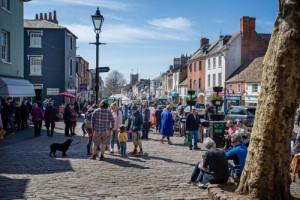
Bridport’s Saturday Market (Photo Credit: Nigel Jarvis /Shutterstock.com)
Events and Festivals
Bridport has a packed itinerary of annual festivals and events. The week-long Bridport Food Festival, held in late June showcases local food produce and concludes with the Round Table Beer Festival. The annual town carnival is held on the third Saturday in August. The Melplash Agricultural Show, described as the best of its kind in the South West, is held annually at West Bay on the final Thursday of August. The town’s Hat Festival takes place for a weekend every September. The Bridport Literary Festival, which is held annually for a week during November. The annual charity Christmas Tree Festival is held every December.
Other annual events include the ‘West Bay Wallow’, a charity swim event, and a fancy dress raft race organised by the local Rotary Club. There are also art regular events, the Bridport Open Studios feature exhibitions by local artists.
Twinning
Bridport is twinned with Saint-Vaast-la-Hougue, France.
Getting to Bridport
To get to Bridport by road is fairly straightforward. From London and the South East, take the M3 southbound and then the M27 westbound until it becomes the A31. Follow the A31 until its terminus and junction with the A35. Continue on the A35 until you arrive at Bridport. From the Midlands and North take the M5 southbound. Turn off at Junction 25 (Taunton) and take the A358 to Axminster. Then take the A35 eastbound to Bridport.
If you want to travel from London to Bridport by rail, then take the train from Waterloo to Dorchester South. You can use the regular bus service or a taxi to make the 15 miles journey to Bridport. Trains from Birmingham and Bristol arrive at Dorchester West.
The nearest regional airports to Bridport are at Bournemouth (46 miles) and Exeter (35 miles).
Notable Residents
- Thomas Ridley Sharpe (1928 – 2013) – was a renowned satirical novelist who moved to the town in 1978.
- John Hubbard (1931 – 2017) – was a famed American-born abstract impressionist painter who lived in Bridport in the 1960s and 70s.
- Polly Jean Harvey – is a well-known singer, songwriter, and proficient musician. Better known as PJ Harvey, and as a vocalist and guitarist, she was born in Bridport in 1969.
Sport in Bridport
Bridport FC currently (2021) play in the Western Football League Premier Division. Known as “The Bees” they play home games at St Mary’s Field, which has a capacity of around 2,000. You can get some more details on our team page.
Bridport RFC currently (2021) play in the Dorset & Wilts South Division One. They play their home games at the Brewery Fields.
Bridport & West Dorset Golf Club is situated above the cliffs at East Beach, West Bay. As well as an 18-hole links course, the club also has a driving range and pitch & putt course.
Places to see!
- ‘The Chantry’ – is Bridport’s oldest building and dates to the 13th century, or maybe even earlier. It’s thought to have been originally built as a lighthouse for shipping navigating the River Brit. Later, it served as an ecclesiastical residence. It once belonged to a Trust, but now privately owned, it’s no longer open to the public.
- Museum of Rural Bygones – is housed at Mangerton Mill, a 17th-century working watermill. There’s also a tea room, cafe and craft centre at the site. It’s also possible to take a scenic walk along the river, and for any fishermen, indulge in a bit of trout fishing.
- Palmers Brewery – is more than 200 years old, still on the original site, and the only thatched brewery in the UK. It runs popular tours between Easter and October, which take about two hours. The tours end with the traditional tasting session.
- Bridport Museum – tells the story of the town, from its earliest origins to the present day. Exhibits include artefacts from the nearby Roman hillfort and those from its world-famous ropemaking days. However, there’s also plenty of other displays, including prehistoric findings from the nearby Jurassic Coast.
- Eggardon Hill Fort – is a large, recently excavated Iron Age hillfort. It’s set high above nearby Bridport, giving it a unique atmosphere and great views of the surrounding countryside.
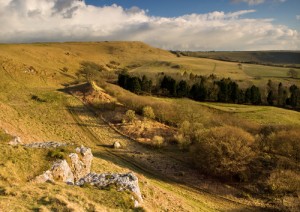
A view of Eggardon Hillfort (Photo Credit: David Crosby/Shutterstock.com)
Things to do!
- South West Coast Path – is England’s longest long-distance footpath and National Trail. It passes through West Bay and stretches for a total of 630 miles along the Cornwall, Devon and Dorset Coast. Mostly used for walking and hiking, it’s also a bridleway and mountain bike track in intermittent places.
- West Bay – sometimes known as Bridport Harbour, is just 1.5 miles (2 km) from Bridport. It has a 240 m pier and two highly-rated beaches. Rowing boat hire and fishing trips are available from the harbour. You’ll also find the usual seaside delights such as fish & chips, ice cream, etc., are available
- Hive Beach – is a spectacular shingle beach that is fringed by high cliffs. It’s located close to Burton Braddock, a small village just 2 miles from Bridport. There are toilets, car parking and a small cafe, close to the beach. However, there’s no lifeguard, though swimming can be dangerous at certain times.
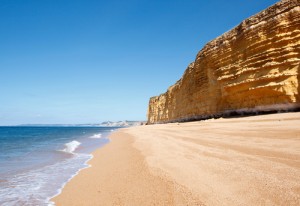
Hive Beach (Photo Credit: Lilly Trott/Shutterstock.com)
Where to Stay?
The area in and around Bridport/West Bay provides a wide choice of accommodation. There’s everything from stylish country hotels through to camping and glamping. Self-catering properties are popular but you’ll also find a good range of bed and breakfasts, guesthouses and inns. Thus, there should be something to suit just about everyone’s budget and taste.
Thinking of moving to Bridport?
Properties in Bridport have sold for an overall average price of around £307,200 over the last year (June 2021). The majority of sales during that time were for detached properties, which sold for an average price of £410,900. Terraced properties sold for an average of approximately £253,500, while semi-detached properties fetched £309,000. The average ‘sold’ price of properties in Bridport over the last year was 14% up on the previous year.
Header Image Credit: SteAck/Shutterstock.com
